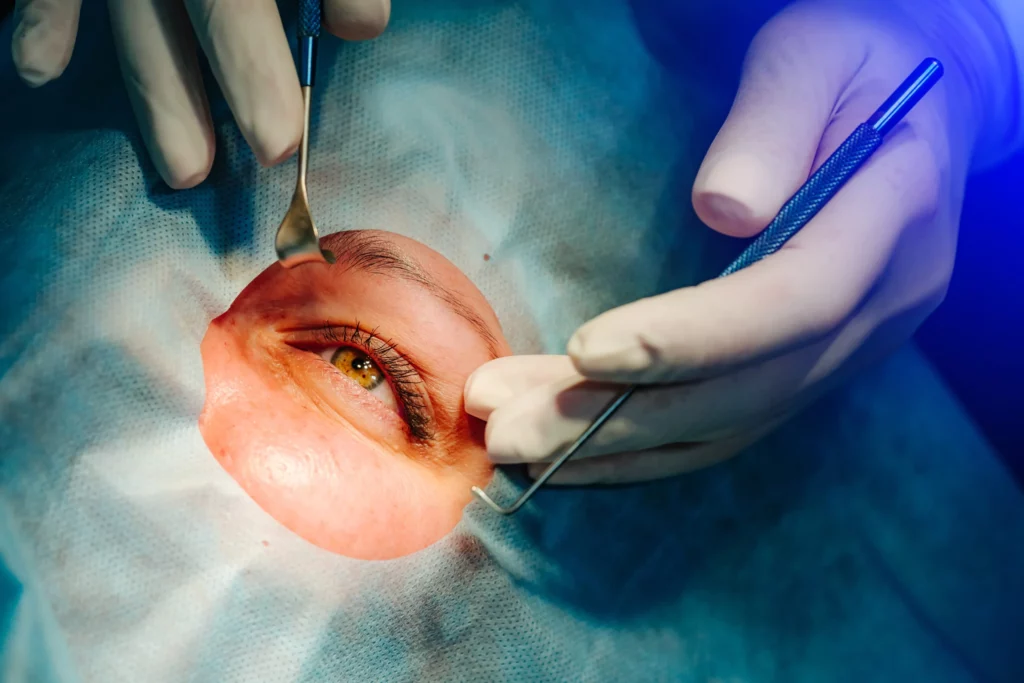LASIK eye surgery has become a popular option for individuals seeking a solution to their vision problems. As technology has advanced, so has the quality and effectiveness of LASIK procedures. If you’re considering LASIK surgery in Sydney, it’s essential to understand the intricacies involved, from the fundamental procedures to the factors that play a role in selecting the right specialist. This article aims to provide a comprehensive guide to help you navigate the world of LASIK surgery, ensuring that you make an informed decision.
Understanding LASIK Eye Surgery
LASIK, or Laser-Assisted In Situ Keratomileusis, is a type of refractive eye surgery designed to correct vision issues such as myopia, hyperopia, and astigmatism. By reshaping the cornea, LASIK aims to enable light entering the lasik eye to focus more accurately on the retina, leading to improved vision.
The Basics of LASIK Procedure
The LASIK procedure begins with the surgeon creating a thin flap in the cornea, using either a microkeratome (a surgical instrument) or a femtosecond laser. After the flap is lifted, an excimer laser reshapes the underlying corneal tissue. This precise alteration improves the way light rays enter the eye, facilitating better focus on the retina. Following the laser treatment, the flap is repositioned, where it adheres on its own without the need for stitches.
Typically, the entire procedure is completed within 30 minutes for both eyes, and most patients experience a relatively painless process. An important aspect of LASIK is that the procedure allows for rapid recovery, with many individuals noticing an improvement in their vision almost immediately. Patients are often able to resume normal activities within a day or two, although it is recommended to avoid strenuous exercise and swimming for a short period to ensure proper healing.

Benefits and Risks of LASIK Surgery
LASIK eye surgery offers numerous advantages, including decreased reliance on glasses and contact lenses, enhanced quality of life, and improved vision clarity. Additionally, the procedure is quick and usually involves minimal discomfort. Many patients report a newfound freedom in their daily lives, from enjoying outdoor activities without the hassle of glasses to waking up and seeing clearly without fumbling for their contacts.
However, like any surgical intervention, LASIK comes with its risks. Potential complications can include dry eyes, visual disturbances, and, in rare cases, issues with visual acuity. It’s crucial for prospective patients to weigh these benefits against potential risks and discuss them comprehensively with their chosen specialist. Moreover, candidates for LASIK should undergo thorough pre-operative assessments, including corneal thickness measurements and a detailed eye exam, to determine their suitability for the procedure. This careful evaluation helps ensure the best possible outcomes and minimizes the likelihood of complications.
Factors to Consider When Choosing a LASIK Specialist
Finding the right LASIK specialist is an essential step in ensuring a successful surgery. Several factors can influence your choice, and thorough research can help you make the best decision.
Qualifications and Experience
When seeking a LASIK specialist, their qualifications and experience should be top of your list. Look for eye surgeons who are board-certified and have extensive training in refractive surgery. It’s also beneficial to consider their experience: A specialist who has performed many LASIK procedures may have more expertise in managing various cases and potential complications. Additionally, inquire about their continuing education and involvement in professional organizations, as this can indicate a commitment to staying updated with the latest advancements in the field.
Technology and Equipment
The type of technology and equipment used by a surgeon can significantly impact the outcome of LASIK surgery. Modern LASIK uses advanced laser systems, such as wavefront-guided LASIK, which allows for more personalized treatment by mapping the eye’s unique imperfections. Ensure that your chosen specialist utilizes the latest technology to improve safety and visualization during the procedure. Furthermore, consider the facility where the surgery will take place; accredited surgical centers often adhere to higher standards of care and hygiene, which can enhance your overall experience and peace of mind. Read more about the advancements in technology at https://soeonline.american.edu/blog/technology-in-education/
Patient Reviews and Satisfaction
One of the best ways to gauge the efficacy and reliability of a LASIK specialist is to read patient reviews and testimonials. Many patients share their experiences online, providing insights into the surgery’s results and the care they received. High patient satisfaction rates and positive feedback can be strong indicators of a reputable specialist. It can also be helpful to speak directly with former patients if possible, as personal recommendations can provide a deeper understanding of what to expect, including the pre-operative consultations and post-operative care.
Consultation and Communication
The initial consultation is a crucial aspect of your journey towards LASIK surgery. During this appointment, assess how the specialist communicates with you and addresses your concerns. A good LASIK surgeon should take the time to explain the procedure thoroughly, discuss potential risks, and answer any questions you may have. This open line of communication is vital not only for understanding the surgery itself but also for building trust and ensuring that you feel comfortable with your decision. Additionally, pay attention to how the staff interacts with patients; a supportive and knowledgeable team can significantly enhance your overall experience.
Follow-Up Care
Post-operative care is an essential component of the LASIK process that should not be overlooked. A reputable LASIK specialist will provide comprehensive follow-up appointments to monitor your healing and address any concerns that may arise after surgery. Inquire about the follow-up care protocol, including how many visits are included and what kind of support is available should you experience any complications. A commitment to thorough post-operative care can be a strong indicator of a specialist’s dedication to their patients’ long-term success and satisfaction with their vision correction journey.
Preparing for Your LASIK Surgery in Sydney
Proper preparation for LASIK surgery is essential to ensure a smooth experience and optimal outcomes. Understanding the steps involved in the preparation process can alleviate concerns and help manage expectations.
Initial Consultation and Eye Examination
Your journey toward LASIK surgery will begin with an initial consultation where the surgeon will conduct a comprehensive eye examination. This exam will assess your eligibility for the procedure, determining factors such as corneal thickness and overall eye health. During this meeting, be prepared to discuss your medical history and any eye wear you may have been using.
Additionally, this is an excellent opportunity to ask questions about the procedure, recovery time, and potential risks. The information you gather will be vital in helping you feel more confident about proceeding with LASIK. It’s also beneficial to bring a list of any medications you are currently taking, as certain drugs can affect the healing process. Your eye care professional may recommend stopping specific medications temporarily to ensure the best possible outcome.
What to Expect on the Day of Surgery
On the day of the surgery, you’ll follow specific instructions provided by your specialist. This may include avoiding contact lenses for a few days leading up to the procedure and organizing a ride home after the surgery, as your vision may be blurry. Arriving at the clinic with all required paperwork and personal identification will also streamline the process.
Once at the clinic, a series of preparatory steps will be outlined, including administering eye drops to numb your eyes. The procedure itself is quick, and you can expect to resume your usual activities shortly after. However, you will likely need someone to accompany you home due to temporary vision changes. It’s also important to wear comfortable clothing on the day of your surgery, as you will be seated for a while and may feel more at ease in relaxed attire. After the procedure, you may be given protective eyewear to wear, especially while sleeping, to prevent any accidental rubbing of your eyes during the initial healing phase. Click here to learn more about the expectations on day of surgery.
Post-Surgery Care and Follow-up
After undergoing LASIK surgery, proper post-operative care and follow-up appointments are crucial to monitor your recovery process and ensure your eyes heal correctly.
Immediate Aftercare and Recovery
Immediately following your surgery, it is typical to experience some discomfort, including dryness or a gritty sensation in your eyes. Your specialist may provide you with lubricating eye drops to aid in this recovery phase. It is essential to avoid rubbing your eyes and to follow your doctor’s instructions for using prescribed medication.
Within the first few days, you’ll likely notice significant improvements in your vision. Regular check-ups will help your specialist track your healing progress and address any concerns you may have. During this period, it’s advisable to rest your eyes as much as possible. Limiting screen time and avoiding bright lights can help reduce discomfort and promote healing. Additionally, wearing sunglasses outdoors can protect your sensitive eyes from harsh sunlight and wind, which can exacerbate dryness.
Long-Term Vision Care Post-LASIK
Long-term care after LASIK involves regular vision check-ups to ensure that your eyes remain healthy. Many patients experience stable vision for years post-surgery, but some may need to continue wearing glasses for occasional tasks.
Maintaining a healthy lifestyle, including a balanced diet, protecting your eyes from UV light, and avoiding harmful habits like smoking, can contribute to your overall eye health for years to come. Incorporating foods rich in omega-3 fatty acids, such as salmon and flaxseeds, can support eye health by promoting tear production and reducing dryness. Furthermore, staying hydrated is essential, as it helps maintain moisture levels in your eyes. Regular exercise can also improve circulation, which is beneficial for your overall well-being, including your vision. Remember to schedule annual eye exams, even if you feel your vision is stable, as early detection of any potential issues can lead to more effective treatment options.

Financing Your LASIK Surgery
Financing options can play a significant role in deciding whether to proceed with LASIK surgery. Understanding the associated costs and available payment plans can ease the financial burden.
Understanding the Costs
The cost of LASIK surgery can vary widely based on factors such as the surgeon’s experience, the technology used, and geographic location. In Sydney, patients may expect to pay anywhere from $2,000 to $5,000 per eye, depending on the specifics of their case and the chosen specialist. It’s essential to inquire about what is included in the quoted price, such as pre-operative tests, consultation fees, and post-operative care.
Payment Plans and Insurance Options
Many LASIK clinics offer financing options, such as payment plans that allow you to spread the cost over time. Other financial institutions may provide loans or healthcare credit options. Since LASIK is often considered an elective surgery, it isn’t typically covered by health insurance; however, some insurance plans may offer discounted rates or reimbursement for portions of the surgery.
It’s vital to thoroughly explore all financial alternatives available to you and discuss them with your chosen specialist’s office. By doing so, you can alleviate financial concerns and focus on improving your vision.
Related : Understanding the LASIK Eye Surgery Process and Recovery


